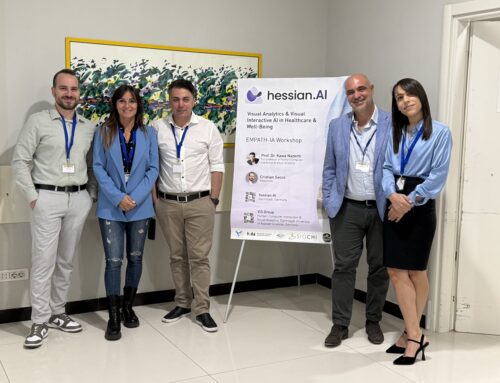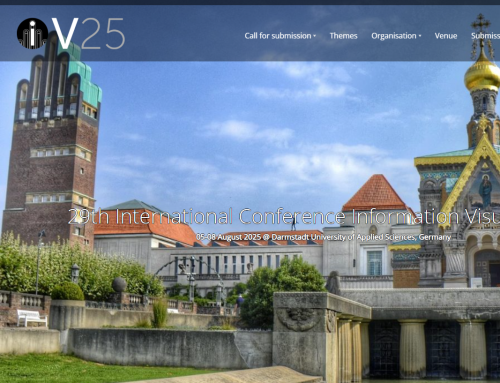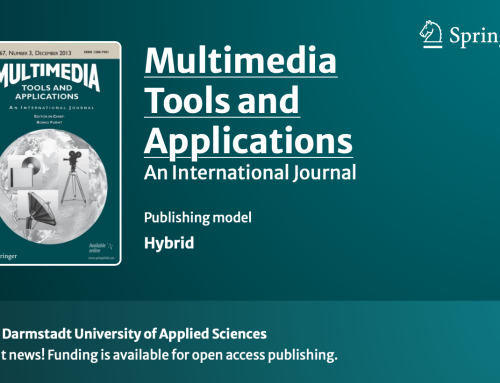Three of our submitted collaboration papers got accepted at the this year’s IEEE Information Technology and Management Science Conference 2020. The conference aims at bringing together young scientists and researchers from information technologies and management sciences in an effort to promote and encourage cross-fertilization of ideas and tools related to the general topics of the conference, such as Information Technology, Information Systems, Computer Technologies, Data Processing, System Security and Control, Modelling and Simulation, Automatic Control, E-Commerce and E-Governance, Cloud Computing, Human Computer Interaction, Cyber-Physical Systems, Intelligent Systems, Internet of Everything.
Paper #1: Visual Analytics Indicators for Mobility and Transportation
Abstract:
Visual Analytics enables a deep analysis of complex and multivariate data by applying machine learning methods and interactive visualization. These complex analyses lead to gain insights and knowledge for a variety of analytics tasks to enable the decision-making process. The enablement of decision-making processes is essential for managing and planning mobility and transportation. These are influenced by a variety of indicators such as new technological developments, ecological and economic changes, political decisions and in particular humans’ mobility behavior. New technologies will lead to a different mobility behavior with new constraints. These changes in mobility behavior and logistics require analytical systems to forecast the required information and probably appearing changes. These systems have to consider different perspectives and employ multiple indicators. Visual Analytics enable such analytical tasks. We introduce in this paper the main indicators for Visual Analytics for mobility and transportation that are e exemplary explained through two case studies to illustrate the advantages of such systems. The examples are aimed to demonstrate the benefits of Visual Analytics in mobility.
Link to paper/fulltext: DOI: 10.1109/ITMS51158.2020.9259321
More information about the technology and topic: Scitics for Visual Trend Analytics, Business Analytics, Trend Analytics and Technology Foresights
Paper #2: Innovations in Mobility and Logistics: Assistance of Complex Analytical Processes in Visual Trend Analytics
Abstract:
A variety of new technologies and business ideas are arising in the domain of mobility and logistics. It can be differentiated between fundamental new approaches, e.g. central packaging stations or deliveries via drones and minor technological advancements that aim on more ecologically and economic transportation. The need for analytical systems that enable identifying new technologies, innovations, business models etc. and give also the opportunity to rate those in perspective of business relevance is growing. The users’ behavior is commonly investigated in adaptive systems, which is considering the induvial preferences of users, but neglecting often the tasks and goals of the analysis. A process-related supports could assist to solve an analytical task in a more efficient and effective way. We introduce in this paper an approach that enables non-professionals to perform visual trend analysis through an advanced process assistance based on process mining and visual adaptation. This allows to calculate a process model based on events, which is the baseline for process support feature calculation. These features in form of visual adaptations and the process model enable assisting non-experts in complex analytical tasks.
Link to paper/fulltext: DOI: 10.1109/ITMS51158.2020.9259309
More information about the technology and topic: Scitics for Visual Trend Analytics, Business Analytics, Trend Analytics and Technology Foresights
Paper #3: On Microservice Architecture Based Communication Environment for Cycling Map Developing and Maintenance Simulator
Abstract:
Urban transport infrastructure nowadays involves environmentally friendly modes of transport, the most democratic of which is cycling. Citizens will use bicycles if a reasonably designed cycle path scheme will be provided. Cyclists also need to know the characteristics and load of the planned route before the trip. Prediction can be provided by simulation, but it is often necessary to use heterogeneous and distributed models that require a specific communication environment to ensure interaction. The article describes an easy communication environment that is used to implement interaction and interoperability in a multi-agent-based cycle path design and exploitation simulator, where each domain simulation is performed as a microservice.
Link to paper/fulltext: DOI: 10.1109/ITMS51158.2020.9259299
More information about the the topic: eGovernance and Policy Modeling





